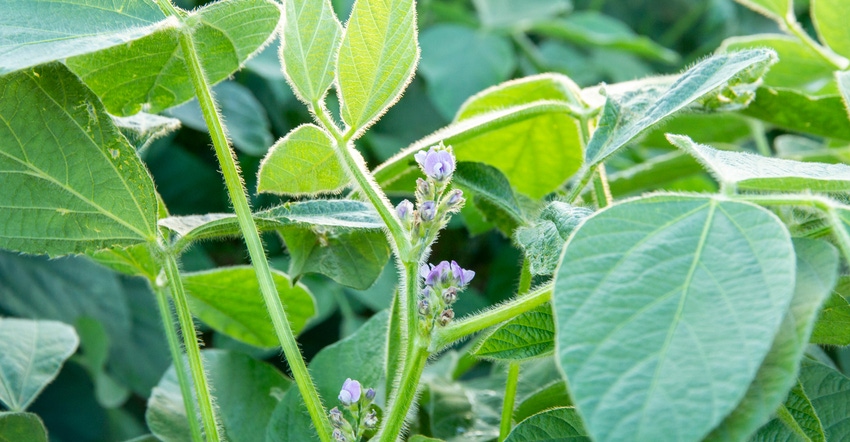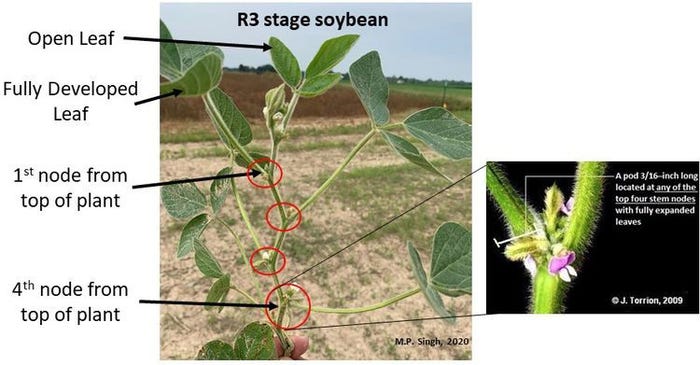July 26, 2021

Correctly identifying R3 growth stage in a soybean field is critical for various management decisions.
Soybeans are flowering, which is going to trigger various management decisions critical in the early reproductive stages. These include fungicide and insecticide application and irrigation scheduling. Beginning pod (R3 stage) is one critical stage for these decisions.
Fundamental understanding is critical in correctly assessing soybean growth stages. Individual soybean plants may have flowers, pods and seed setting all at the same time in the early reproductive stages.
Consistency can be achieved by using a common method for staging soybeans. Here we describe a method that is commonly used in soybean literature (“Stages of soybean development” by Fehr and Caviness) for staging soybean plants and fields for the R3 stage.

A soybean plant is at the R3 growth stage (beginning pod) when:
There is a pod at least three-sixteenths-inch long (but less than three-quarter-inch long) at one of the four uppermost nodes on the main stem with a fully developed leaf.
A leaf is fully developed, and the node is counted when the leaf at the node immediately above it is open (i.e., leaf edges are not touching).
Soybean plants within a field may be at different growth stages on a given day. At least 50% of plants in a field need to be at a certain growth stage for the whole field to be considered at that stage. Sample multiple plants in several representative areas of the field for accurately determining growth stage of your field.
In our research trials in East Lansing, Mich., maturity group 2 soybeans planted early in the season (end of April to early May) entered the R3 growth stage during the second week of July. Trials planted in mid- to late May are starting to set pods, but were not yet in R3 stage as of July 14.
Do not rely on plant height, calendar date or your neighbors’ fields for soybean growth staging. Walk your own field at least once a week at early reproductive phase to accurately access critical growth stages.
For more information on soybean growth stages, visit “A Visual Guide to Soybean Growth Stage” from the University of Wisconsin-Madison.
Singh is an assistant professor in the Michigan State University Department of Plant, Soil and Microbial Sciences. Staton is a soybean educator with Michigan State University Extension.
Source: MSUE, which is solely responsible for the information provided and is wholly owned by the source. Informa Business Media and all its subsidiaries are not responsible for any of the content contained in this information asset.
You May Also Like




